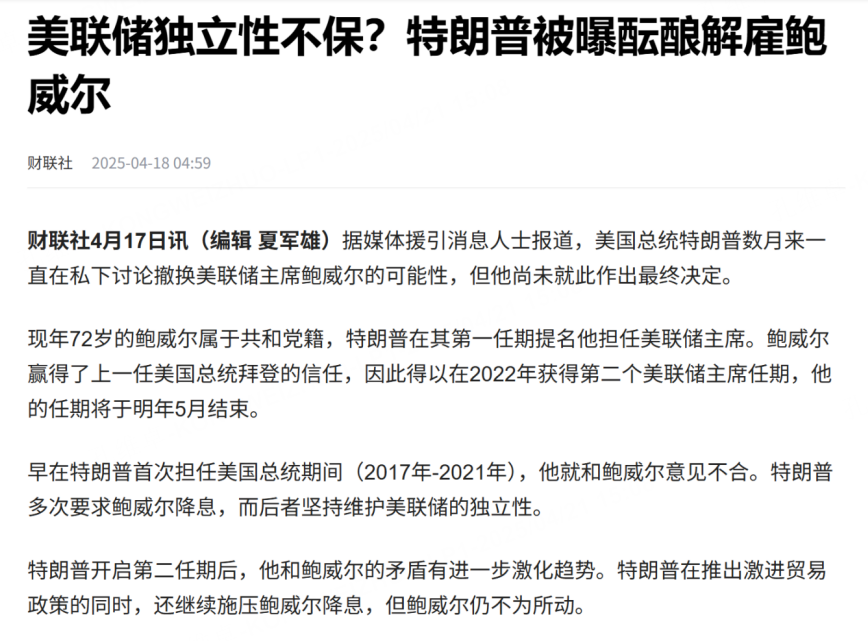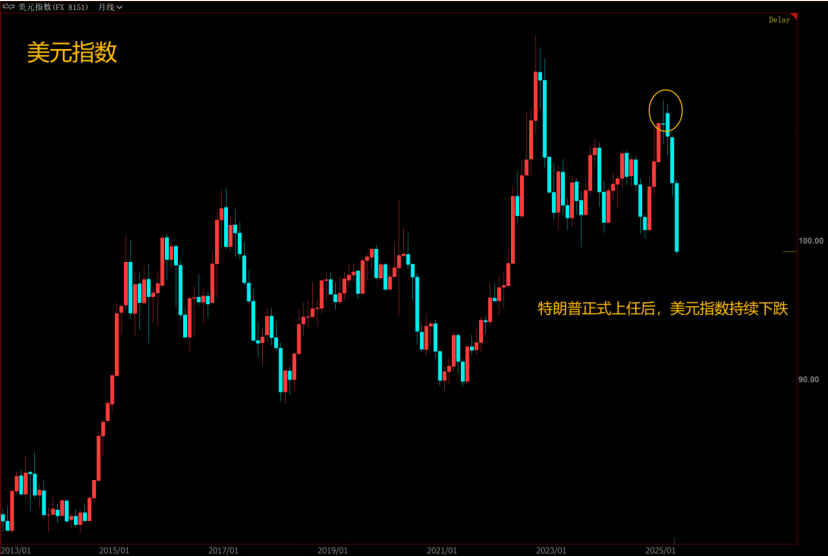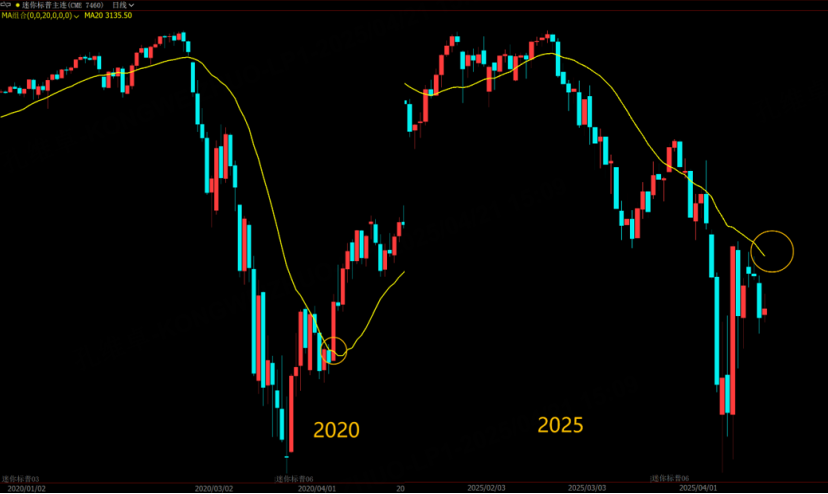Trump Pressures the Fed for an Emergency Rate Cut: Will U.S. Stocks Rebound This Week?
As Jerome Powell continues to stress uncertainties around the economy and inflation—firmly sticking to a “hawkish” stance against rapid rate cuts—President Trump has now “reached his limit,” openly questioning whether he holds the authority to “fire” the Federal Reserve Chair.
Though actually removing Powell in practice would be quite difficult—and with Powell’s term set to expire next year, it·s debatable whether such a move would even be necessary—the increasing disconnect between presidential policy and Fed monetary policy has become stark.
Against the backdrop of shifting tariff policies, unexpected headlines have started to hit the market with greater frequency. Given Trump’s characteristic unpredictability, it’s hardly unthinkable that he might impulsively announce Powell’s dismissal, adding further disorder and volatility to financial markets.
1. The Dollar Index in a Downtrend
The dollar, as a global reserve currency, depends not only on America’s economic heft but also on the independence of its central bank.
With Trump’s return to the presidency, markets have begun to question whether the Fed’s independence will hold. The sharp decline in the U.S. Dollar Index reflects these doubts to some extent.
The dollar’s persistent weakness, despite no rate cuts yet in sight, is quite telling—it suggests that capital is losing confidence in the dollar, with investors starting to move out of dollar-denominated assets. This situation is likely to persist until relations between Trump and the Fed stabilize. A sustainable rebound in the dollar may not happen until there is a change in Fed leadership—expected only when Powell’s term ends next May.
Trump’s announcement of a 90-day postponement of tariffs allowed U.S. stock indices, which had already technically entered a bear market, to rebound back toward the edge of this critical “life-or-death” threshold. As negotiations with multiple countries continue, tariff policy remains highly unpredictable.
This uncertainty is amplifying market sentiment and increasing the likelihood of sharp, short-term swings in both directions.
Currently, U.S. stock indices remain near the 20-month moving average and are still below the 20-day average, making it unclear whether they have truly stabilized. Using the 20-day moving average as a tracking tool can help sidestep the noise of headline-driven volatility.
A break above the 20-day average could signal the possibility for long positions to re-enter, but at this stage, buying short-term options to test market direction remains a prudent approach. Volatility is high, so option premiums are somewhat elevated; however, if the market makes a big move, options offer better risk management compared to futures or stocks.
Now, as the market teeters on the edge of a bear market, buying both call and put options means that any sharp move in either direction could yield a profit, and if the market doesn’t move, your loss is limited to the options premium—making risks manageable.
Looking ahead to next week, any further statements from Trump could easily shake up sentiment even more. Big week-over-week swings would not be surprising. For short-term traders, strict stop-loss strategies are a must, and for medium- and long-term investors, it’s wise not to be hasty with decisions.
The U.S. dollar’s ongoing weakness reflects doubts over the Fed’s continued independence, likely to persist until Powell’s term ends next May.
U.S. stock indices are teetering at the threshold of a bear market; with tariff policy up in the air, short-term volatility is expected to remain high.
For now, cautious and flexible trading strategies are advisable, keeping close watch on news developments and technical signals.
$NQ100指数主连 2506(NQmain)$ $SP500指数主连 2506(ESmain)$ $NQ100指数主连 2506(NQmain)$ $黄金主连 2506(GCmain)$ $WTI原油主连 2506(CLmain)$
Disclaimer: Investing carries risk. This is not financial advice. The above content should not be regarded as an offer, recommendation, or solicitation on acquiring or disposing of any financial products, any associated discussions, comments, or posts by author or other users should not be considered as such either. It is solely for general information purpose only, which does not consider your own investment objectives, financial situations or needs. TTM assumes no responsibility or warranty for the accuracy and completeness of the information, investors should do their own research and may seek professional advice before investing.
- peepzy·04-22Wow, such insightful analysis! Love it! [Heart]LikeReport



